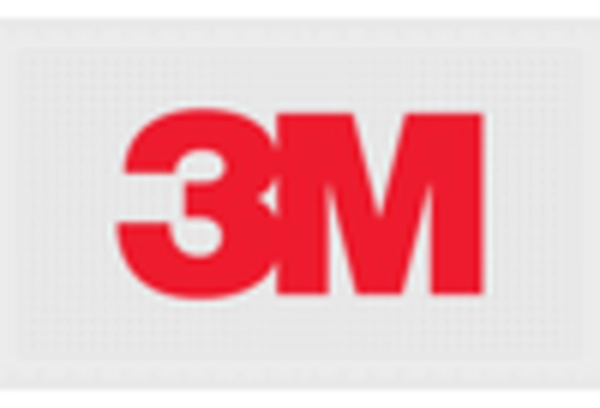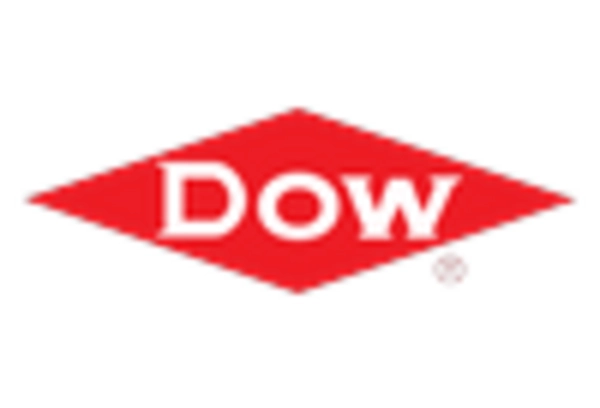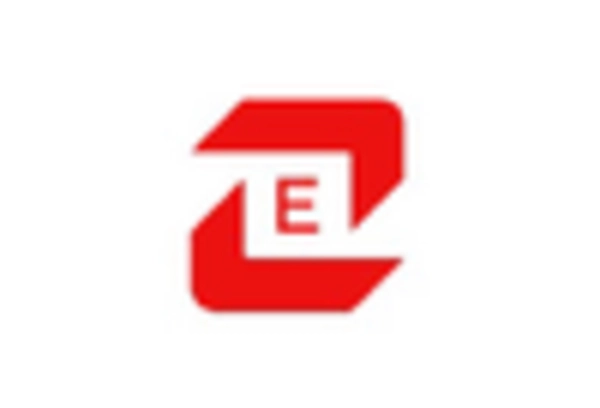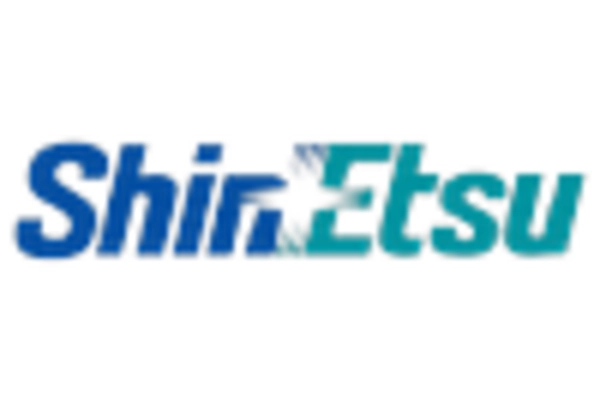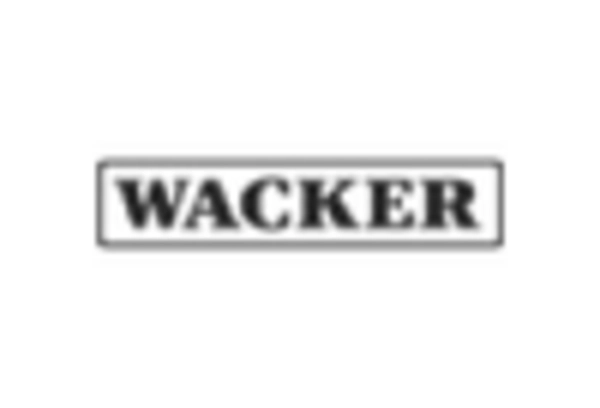Market Growth Projections
The Global Fluorosilicone (FVMQ) Rubber Market Industry is poised for substantial growth, with projections indicating a market value of 135.7 USD Million in 2024 and an anticipated increase to 244.7 USD Million by 2035. This growth trajectory suggests a compound annual growth rate of 5.51% from 2025 to 2035. Various factors, including rising demand in aerospace and automotive applications, technological advancements, and increasing regulatory standards, contribute to this positive outlook. The market's expansion reflects the growing recognition of FVMQ rubber's unique properties and its suitability for diverse applications across multiple industries.
Increasing Regulatory Standards
The Global Fluorosilicone (FVMQ) Rubber Market Industry is influenced by the rising regulatory standards concerning material safety and environmental impact. Governments and regulatory bodies worldwide are implementing stricter guidelines for materials used in critical applications, particularly in aerospace and automotive sectors. Fluorosilicone rubber, known for its low toxicity and environmental compatibility, positions itself favorably in this context. As industries strive to comply with these regulations, the demand for FVMQ rubber is likely to increase, thereby supporting the market's growth. The anticipated market value of 135.7 USD Million in 2024 and 244.7 USD Million by 2035 underscores the potential for expansion driven by regulatory compliance.
Growth in Automotive Applications
The automotive sector significantly contributes to the Global Fluorosilicone (FVMQ) Rubber Market Industry, as manufacturers increasingly adopt FVMQ rubber for its superior performance in harsh environments. This material is utilized in various automotive components, including seals, gaskets, and hoses, which require high resistance to oils, fuels, and extreme temperatures. The ongoing transition towards electric vehicles, which demand advanced materials for battery and thermal management systems, further propels the demand for FVMQ rubber. As the automotive industry evolves, the market for FVMQ rubber is anticipated to grow, aligning with the overall market value projections of 135.7 USD Million in 2024 and 244.7 USD Million by 2035.
Rising Demand in Aerospace Sector
The Global Fluorosilicone (FVMQ) Rubber Market Industry experiences a notable surge in demand driven by the aerospace sector. Fluorosilicone rubber's exceptional resistance to extreme temperatures and fuel exposure makes it a preferred choice for seals and gaskets in aircraft engines and fuel systems. As the aerospace industry expands, with projected growth rates indicating an increase in aircraft production, the demand for FVMQ rubber is expected to rise. This trend is further supported by the industry's projected market value of 135.7 USD Million in 2024, with expectations to reach 244.7 USD Million by 2035, reflecting a compound annual growth rate of 5.51% from 2025 to 2035.
Expanding Applications in Electronics
The Global Fluorosilicone (FVMQ) Rubber Market Industry is witnessing an expansion in applications within the electronics sector. FVMQ rubber's excellent dielectric properties and resistance to heat and chemicals make it an ideal choice for insulating materials and components in electronic devices. As the electronics industry continues to grow, driven by advancements in technology and increasing consumer demand for high-performance devices, the need for reliable insulating materials is paramount. This trend is expected to bolster the market for FVMQ rubber, contributing to the projected growth from 135.7 USD Million in 2024 to 244.7 USD Million by 2035.
Technological Advancements in Material Science
Innovations in material science play a crucial role in shaping the Global Fluorosilicone (FVMQ) Rubber Market Industry. Ongoing research and development efforts are focused on enhancing the properties of FVMQ rubber, such as improving its thermal stability, chemical resistance, and mechanical strength. These advancements enable the production of more efficient and durable products, which are increasingly sought after in various industries, including aerospace, automotive, and electronics. As manufacturers adopt these new formulations, the market is likely to witness a steady growth trajectory, contributing to the projected increase in market value from 135.7 USD Million in 2024 to 244.7 USD Million by 2035.

